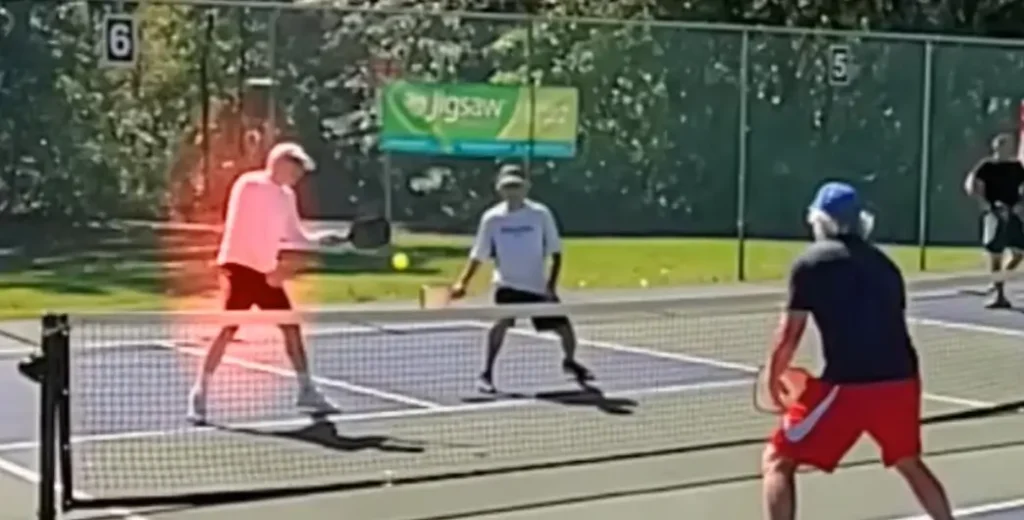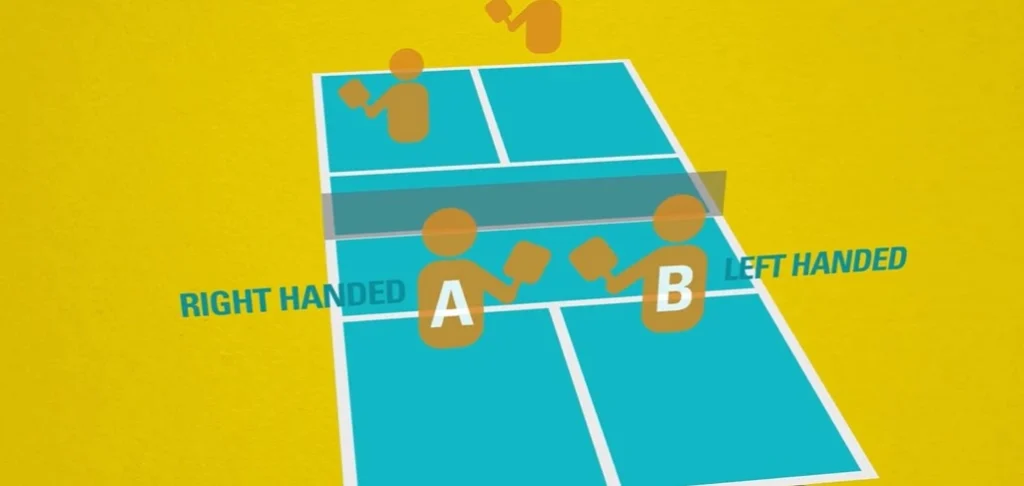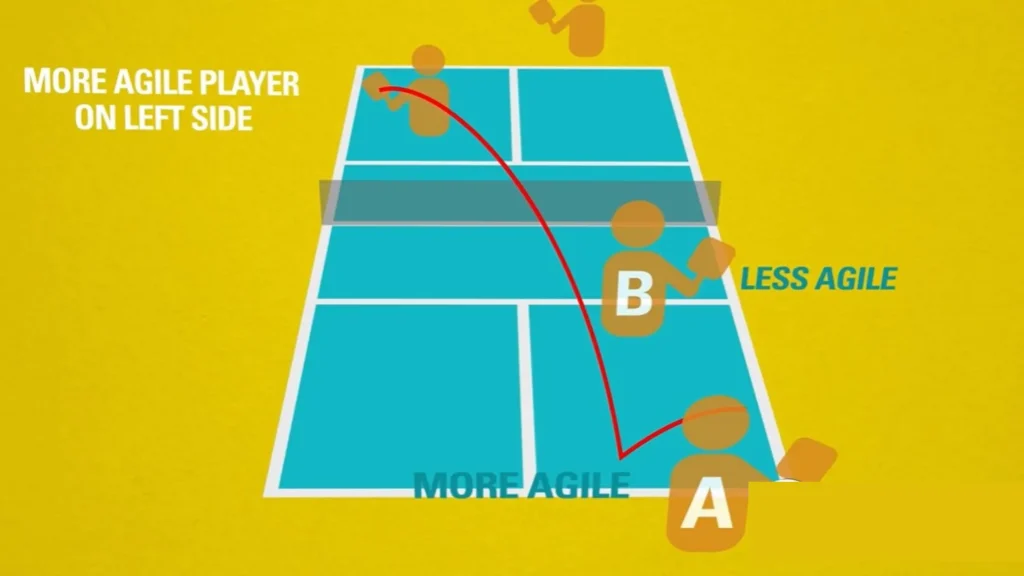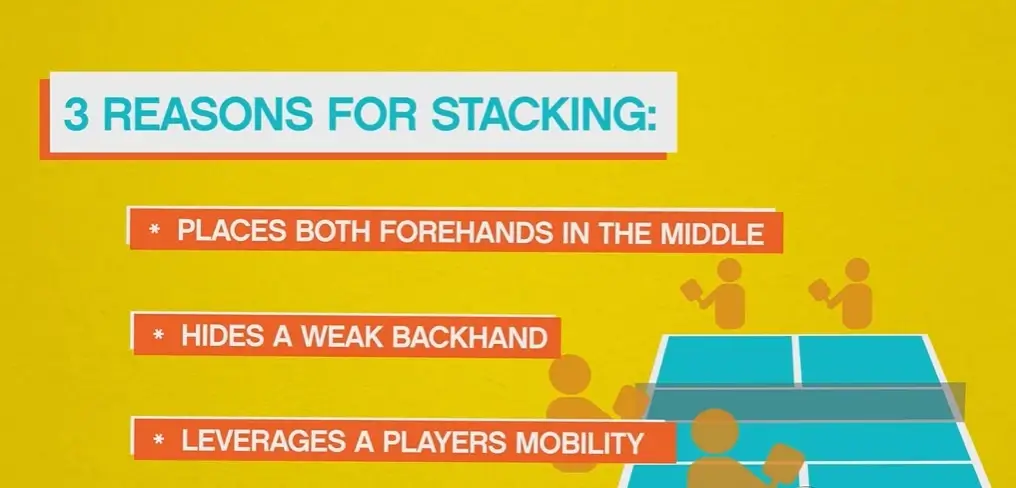Every game you like makes you addicted to it. Pickleball is the one of those games. When you play often, some rules and traditions may frustrate you.
I don’t know if it happens with you, but it’s true when I was not aware of pickleball stacking; playing in the same traditional positions used to make me exhausted.
This article will guide you to perform stacking and the significance of it.
What is Pickleball Stacking?
Stacking in Pickleball refers to the unique positioning of players in Pickleball doubles play. It refers to the art of standing both players on one side of the pickleball court, so they can perform well by sliding over to the side where the ball is hit.
Through stacking, you can build opportunities for the strongest forehand shot.
Doesn’t it seem unethical to you?
When I was first introduced to stacking techniques, I was just stuck and said it’s totally an unfair advantage to win the game.
I was bewildered; why does USAPA allow stacking?
If you are thinking the same, don’t worry, this too has some rules. You can’t stack anytime or every time.

To Whom Pickleball Stacking Techniques Helps?
That’s the right question, so let’s see why a team or which team uses stacking techniques:
The Left-handed Player in a Team
It will not be wrong to say that stacking is just made for them. If you have a left-handed partner, too, you must interpret stacking and go on it.
When your partner uses the left hand, stacking helps to keep twice of the forehands in the center.

A Week Player in a Team
Of course! When there is a weak player in a team of two, stacking helps to cover him. It’s just so true; once I got in a situation like this, my partner felt down and couldn’t work we just won through stacking.
How to Stack in Pickleball? (Pickleball Stacking Rules)
Once you get to know about the advantages/benefits of something, you want to get them. It’s not as easy as it seems because it has some rules to follow.
Without knowing the rules, stacking may get you in trouble too.
To understand Pickleball stacking strategy, a non-traditional positioning, you must know about traditional positioning too.
What does it mean to be in traditional positions?
It refers to staying in your courts at specific left and correct positions, which means one player of the team at left and the other at right.
Half Stack vs Full Stack
Remember, there are two ways to stack: full stack, which means to stack on serve and return the serve. And the other is a half stack, which refers to stacking only on the serve.
Half Stack
It refers to stacking while serving only. Half-stacking will never fatigue you like full.
From the serve, stacking is not a challenging strategy but from both, it may cause complications.
Full Stack
As I mentioned above, it means to stack while serving and returning the serve both.
In this strategy, you play the whole game in non-traditional positions. Full stacking might seem a dramatic win, but it complicates the situation and tracking becomes troublesome.
Stacking From the Serve
While stacking in serve, both team players start from the same slot and then rearrange or slide over when the ball is hit.
Let’s take an example, the two players of the team named Henry and Jesse are both on the right side of the court.
When Henry serves as a first server, he will shift to the left side of the court, covering Jesse or stacking the team.
Remember, the team will only stack when you have an odd score, e.g., 1,3,5,7… and when your score is even, e.g., 0,2,4,6, you have to stay in traditional positions.
The benefit here is that Jesse, a weak player, will always stay on the right side of the court, and Henry will always stay on the left after serving.

Stacking From the Return
For stacking on return of serve, both players Henry and Jesse have to stay in the same slot. In this, the one returning will be at baseline, and the other will stay next to the kitchen/non-volley zone.
In this situation, the returning player will move towards the opposite side while the non-returning will move near the kitchen at the volley position.
Does Henry need to keep Jesse at some specific side? Henry and Jesse have to stack when both players are receiving.
General Recommendations About Pickleball Stacking
Are you taking Stacking as a doddle? No, no, I suppose you might be wrong, be careful.
I will suggest some important tips about this strategy:
3/4 Stack Rather Than 4/4
Muddled? There exist a 3/4 sack, too, rather than half and full. Now, you might be thinking, why stack 3/4? And how?
Let’s take a closer look into it.
The third-fourth stack refers to stacking on serve for full-time and return for only half time. This is because, in this situation, you don’t have to run for as long as in full Stacking.
If your partner is not a beginner and has somewhat better skills, you don’t need to stack fully.
Full Stacking: A Lot of Running
It seems new to you, but it’s a horrible fact. If your partner can do it, you should never stack. It may cause you fatigue in return.
Be Attentive While Stacking
Stacking strategies require attention, and you can lose points if you are on the wrong side. And you know what! You will feel this loss more than the other.

Final Thoughts On Pickleball Stacking
Stacking strategies are not simple as they seem to be. If you are a beginner, don’t rely on full stacking. You may bewilder. Sometimes, it’s necessary to know about something at a specific time but to wait to apply at a perfect time.
I recommend you seek pickleball stacking strategies, practice half stacking and then come to stack full. Mastery comes with practice and a continuous knowledge.

I am Michael Wanner, an experienced and educated expert in the field of pickleball. I hold a degree in Sports Science from Cleveland State University, Ohio, USA. My expertise lies in the technical aspects of pickleball and how to play it effectively. I have spent many years playing and coaching pickleball and have a wealth of knowledge to share with my readers. I am a valuable resource for anyone looking to improve their pickleball skills and strategies.